Things I like… conservation, bonefish, tarpon, Bill Klyn and El Pescador in Belize. Compelling reasons to join or renew. Be entered in to win a trip to fish with Bill at El Pescador.
http://youtu.be/Wt0DB5oaA5w

Things I like… conservation, bonefish, tarpon, Bill Klyn and El Pescador in Belize. Compelling reasons to join or renew. Be entered in to win a trip to fish with Bill at El Pescador.
http://youtu.be/Wt0DB5oaA5w
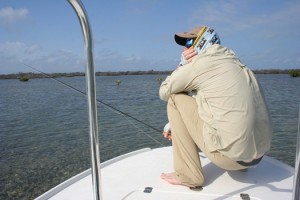
Photo by Matt Hansen… me, seconds after losing a really, really nice fish.
Well… want to get a little depressed?
Here’s a story about netting in Long Island… that’s bonefish netting. This makes me grumpy. I have to say, I didn’t see any netting there when I was there, but, Courntey did.
One of Mr Knowles’s recent guests, Courtney-Marie Martin, writing in the Internet-based fishing blog, skinnywaterculture.com, said of her Long Island experience: “I witnessed first-hand one of the major conservation issues currently going on in the area, with gill netters present not far from the flat we just fished.
#“My heart broke. If we don’t preserve what little we have left, this will all be gone, and there will be no future generation to follow in our footsteps. This is apparently an on-going, don’t ask don’t tell, problem on the island. With a heavy heart, and the thought of bonefish being gill netted, along with other innocents by catch, we headed in.”
If that’s not enough, there are some who think the decline in bonefish in the Keys may have something to do with commercial netting in Cuba. That’s what this article puts forward.
We do not know the exact correlation between the bonefish in the Keys and the fish in Cuba, but we do know that about fifteen years ago, there was massive netting projects going on in the north part of Cuba, gill nets that stretched miles across the flats and channels. From reports the Bonefish and Tarpon Trust has heard, thousands and thousand of bonefish, along with countless other species were netted and sold at market. At about this same time, the bonefish population suddenly plummeted in the Florida Keys.
And why do I keep bringing stuff like this up?
“We have reached the time in the life of the planet and humanities demands upon it when every fisherman will have to be a river keeper, a steward of marine shallows and a watchman on the high seas. We are beyond having to put back what we have taken out. We must put back more than we take out. We must make holy war on the enemies of aquatic life as we have gillnetters, polluters and drainers of wetlands. Otherwise, as you have already learned, these creatures will continue to disappear at an alarming rate. We will lose as much as we have already lost already and there will be next to nothing, remnant populations, put-and-take, dim bulbs following the tank truck.” –Tom McGuane writing in the Some Remarks section of his outstanding book The Longest Silence.
The Bonefish & Tarpon Trust went looking for baby bonefish. This follows up on an effort to find baby bones in 2013 that didn’t find any. This year, they did. Babies grow and become adults and the adults become legends.
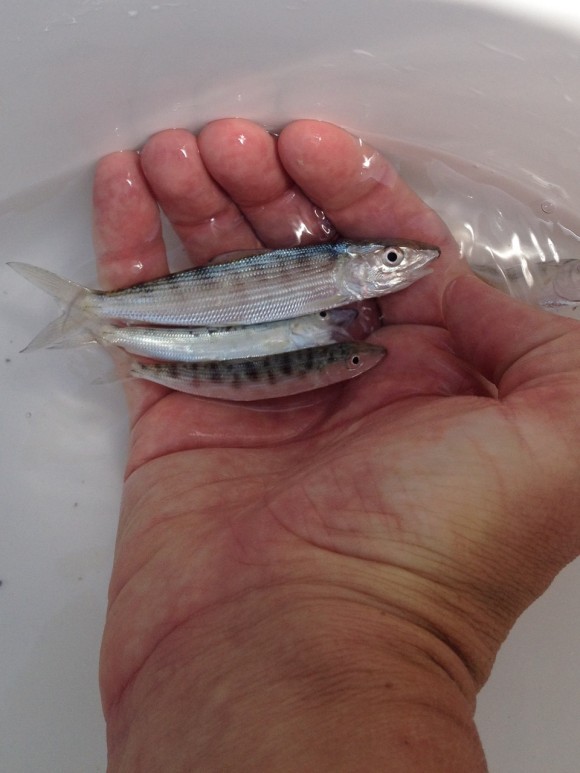
OK… those are adorable.
After revising our search strategy based on the previous year’s results and new information from the Bahamas, BTT set out for the week long Baby Bonefish Blitz in June. We are happy to announce that this year we were successful in locating juvenile bonefish in one location of the Upper Keys where BTT staff and volunteers seined a shoreline that had been identified as likely juvenile bonefish habitat. The juveniles were found with a couple hundred mojarras, something we’ve come to expect based on the previous BTT research conducted in The Bahamas. We are currently awaiting genetic analysis to confirm that these were juvenile Albula vulpes, and not one of the other species of bonefish that aren’t caught in the recreational fishery.
I found one, smallish, bonefish when I was there in 2013. The youth movement appears to be going well in the Keys. Here’s to hoping it continues.
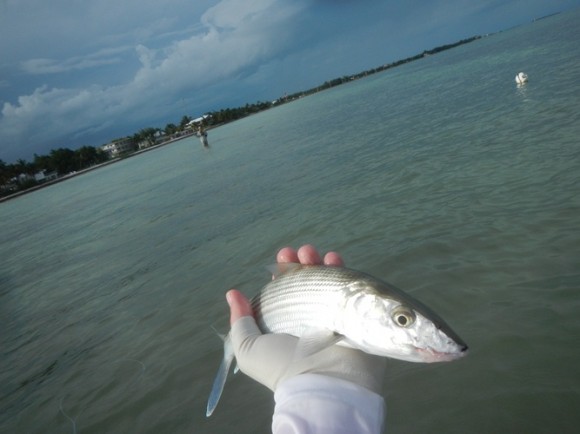
My one Florida Bonefish
also…
If you find juvenile bonefish like the ones in the photo, please let us know the location and date (email: info@bonefishtarpontrust.org). Please do not collect the juvenile bonefish; a research permit is required to collect.
(Press release from the Bonefish & Tarpon Trust)
The Bahamas have some of the best bonefish fishing in the world, thanks to many miles of shallow flats, and to a community of fishing guides that act as stewards of the fishery and its habitats. In a study conducted in 2009, during the height of the Great Recession, the recreational fishery for bonefish in the Bahamas had an annual economic impact exceeding $141 million (USD). With more recreational fishermen traveling today as the economy recovers, that number is certainly higher. The fishery not only supports jobs, but also allows a culture that relies on the sea to continue.
Despite its economic and cultural importance, the fishery faces trouble. The trouble comes in the form of gillnets, resource extraction, and coastal development.
Gillnets: Despite regulations that prohibit the capture of bonefish with nets, the use of nets to target bonefish is increasing. The most troubling case is on Long Island, where gillnetting on the flats has already negatively impacted the bonefish population, and is threatening the future of the fishery. Despite these illegal acts being reported by fishing guides and others, enforcement has been lacking. Whether the bonefish are being used for bait or are illegally sold at market, their capture brings significantly less economic value than if those fish remained alive and part of the recreational fishery. Nevin Knowles, head of Long Island Bonefishing Lodge, said, “If this keeps up for five years, our bonefish population in Long Island will be gone. They’re using, at the last estimate, a $58,000 bonefish to catch a 90 cent snapper, and they’re killing our industry”, referring to the estimated value of a single caught and released bonefish given the overall value of the fishery. He continued, “The tourists go to the Out Islands for the fishing. That’s the only thing that attracts tourists to Long Island. They’re killing the goose that laid the golden eggs.” In the recent past, similar episodes have been reported on Grand Bahama Island and South Andros.
Dr. David Philipp, Chair of the Fisheries Conservation Foundation, sums it up well: “Bonefish are very susceptible to capture by netting, and removal of those fish could crush the Long Island bonefish population for years to come. This would destroy an extremely valuable industry that benefits the entire community. Everyone in those communities should act to prevent those irresponsible persons from stealing the Bahamas’ natural resources for their own purposes.”
Resource Extraction: The flats of Grand Bahama Island are world-renown for their large and plentiful bonefish. One of the first bonefish lodges in the Bahamas was located on the east end of the island, adjacent to the expansive sand flats that extend for miles to the southeast. This area has been proposed as a National Park to provide protections to the bonefish fishery and other fisheries important to residents. These sand flats are being proposed as a site for sand mining, with sand dredged to a depth of 16 feet. Of particular concern is the area near Bursus Cay. After a public meeting in McLean’s Town in May 2014, Eric Carey, Bahamas National Trust’s Executive Director noted, “The East End Communities, especially the fishermen, have made a strong case for this proposed national park. Noting the importance of Bursus Cay as to the sustainability of their fishery, and the threat that the proposed dredging represents, they have asked Bahamas National Trust to expand the original proposal, to include this important area.” In a story about a similar meeting concerning the proposed park and possible dredging project as reported in BahamasIslandsInfo.com, local fisherman Cecil Leathern said, “We all know what will happen if this dredging is allowed; how it could destroy not only the bonefish flats and our lobster grounds, but also affect them down in Abaco. We need it all protected.”
Coastal Development: After years of research and working with fishing guides, Bonefish and Tarpon Trust researchers have identified a bonefish spawning location on Abaco. Early data suggest that this may be the only spawning location for bonefish that inhabit the world famous Abaco Marls. Bonefish that live in the Marls for most of the year migrate to the spawning location each winter, and return to the Marls after spawning. A proposed resort development along the migration pathway and near the spawning site would disrupt spawning, with inevitable impacts to the bonefish population and the fishery.
*****
Bonefish Conservation: Bonefish & Tarpon Trust has been working with collaborators to address these threats to the bonefish fishery in the Bahamas for the past 8 years. BTT is working with science partners, fishing guides, and lodges to conduct tag-recapture research to identify the home ranges of bonefish. We’re also working to identify the migration pathways to spawning sites, and to identify spawning sites. This information is then used to develop habitat and fish conservation plans to ensure a healthy bonefish fishery. We’re hopeful that information gained in recent years on Grand Bahama Island and Abaco is being used to enact protections for the bonefish fishery and habitats on those islands. We are now applying efforts to other islands, including Long Island, Andros, Great Exuma, Acklins, and others.
How You Can Help: While the information from the work of BTT and collaborators is essential to enacting conservation strategies for bonefish and their habitats, it is not enough. Your help is needed to ensure a healthy future for the fishery. Visit www.btt.org and Contribute to BTT to help fund the Bahamas Initiative. Write a letter expressing your concerns about the threats to the bonefish fishery. Email the letters to us, we’ll compile them and present them in the Bahamas.
Photo: Harold Brewer, Bonefish & Tarpon Trust Board Member and Managing Director of the Bahamas, with Bahamas Prime Minister Perry Christie during a meeting about conservation of the bonefish fishery at Deep Water Cay in 2013.
In case you missed it.. there is a proposal floating around Grand Bahama (yes, THAT Grand Bahama) to allow some Argonite Mining… that’s ripping up of the sea floor. It is a really bad idea.
Shervin Tate, deputy chairman of the Sweeting’s Cay township, said the proposed project is slated to create a mere 60 jobs but will destroy more than 300 – some of them very lucrative – and devastate one of the country’s most beautiful and bountiful marine habitats.
“Once you start to dredge, the conch will disappear, the lobster will disappear, and then you will see a disaster in our community,” Tate said, explaining that silt from the mine will suffocate all marine life for miles around.
This is a really bad idea.
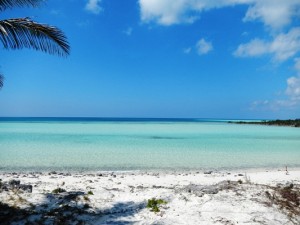
This does not seem like a good place for a mine.
If we really do get recycled when we die and come back here again to do it all over again, my next life I want to be a fisheries biologist. I think about fish for large portions of each day, it would be great to be out there doing field research.
That won’t happen for me, but if you know some young kid who might want to do something like that, you should have them check out Bimini Sharklab. They take on interns and teach them the craft and they just do some pretty damn cool work as well. Really, check them out.
They have a great website and you can follow them on Twitter and Facebook as well.
I love sharks. Maybe I love them because my daughter loves them, but I think it is more than that.

Nurse Shark, snorkeling with El Pescador.
I love seeing sharks up on the flats because it means everything is working, the system is healthy and things are as they are supposed to be. Where you find sharks, you find bonefish. When you see a barracuda hanging around, it is likely a bonefish will pass that way before too long. The predators police the flats, picking off the injured, the sick and the less fit. They are the reason a bonefish swims 25 mph and tails in inches of water. They are what they are because of the predatory pressures exerted by those sharks and cudas.
So, we should all love sharks and forgive the odd shark or cuda that steals a fish off our line. They are the ones who made them, after all.
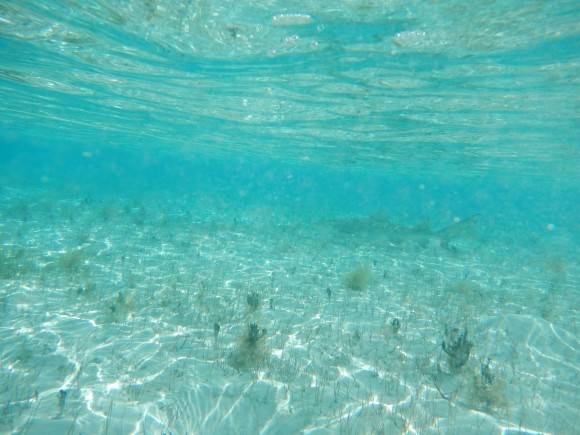
Company.
BTT has announced a new/reinvigorated DNA collection program for tarpon and bonefish. That means a little bit of Citizen Science action and an opportunity for you to participate.
We already know from tagging research that bonefish have a relatively small home range except for spawning migrations, while tarpon are capable of undergoing long-distance migrations. The goal of the Bonefish Genetics Program is to determine the extent that bonefish populations in different locations in the Caribbean and Western Atlantic are related. The goal of the Tarpon Genetics Program is to determine if there is a single, regional tarpon population or multiple sub-populations.
The data will provide invaluable information to help us guide management strategies. But, these multi-year programs will only be successful if anglers and guides participate. To obtain a bonefish genetics or tarpon genetics sampling kit, please email info@bonefishtarpontrust.org or call 321-674-7758.
I actually got to collect some fin clips back on Andros in 2011 and I’m sure the next trip I go on, I’ll be asking for a few kits myself.
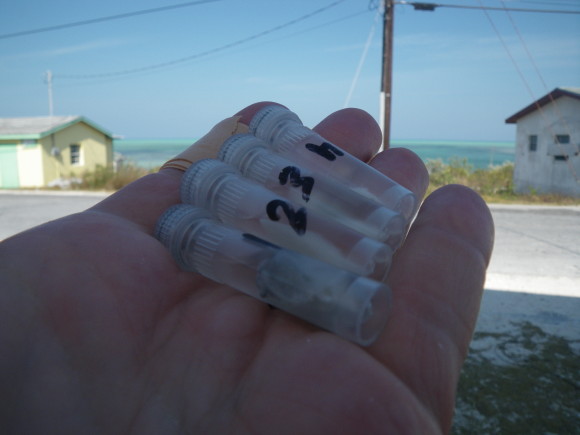
A few clips from 2011
I don’t think Skink would travel much and if he did, it would likely be to the Bahamas or maybe Cuba. Belize might be a stretch, but hey, he’s fictional, so I can send him anywhere I want, right?
This time I’d like him to meet John Travolta down in Belize to discuss the actor’s plans for Lighthouse Reef.
The atoll sits near some pretty sensitive ecological gems and Mr. Travolta would like to plop down a resort there. Sure, it would be “green,” but is there any such thing when it comes to totally transforming a little island and bringing thousands of people out there with all the power, food and sanitation needs they will have?
I bet Skink would have some thoughts.
Environmentalists are in an uproar at the Cabinet’s approval for the multi-million dollar tourism development within the Lighthouse Reef Atoll. Puerto Azul Belize Limited is proposing an exclusive resort, hotel, golf course, villas and spa to be built on Northern Two Caye and Sandbore Caye. The island proposed for development are a short distance from the Blue Hole and Half Moon Caye Natural Monument, both extensively protected areas for their importance in the Belize Barrier Reef Reserve System (a UNESCO World Heritage Site).
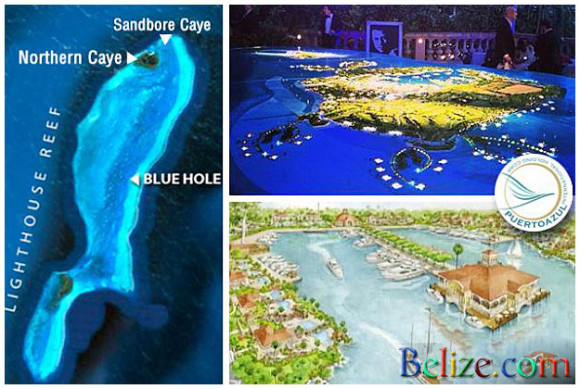
A disaster in the making
I just read Bad Luck Way; A Year on the Ragged Edge of the West by Bryce Andrews.
The book is about a ranch hand on the Madison River’s Sun Ranch. It is about ranching and wolves and the many interactions of cattle, wolves and people and repercussions of those interactions.
The book also brings back many memories for me. Sun Ranch is a place I got to see a little bit of. I got to spend a week there each summer from 2005 to 2007. It is a magical place. It is massive and beautiful and as full of Montana as anything could be.

The Sun Ranch… magical.
I actually saw three wolves with Roger, the former owner who is written about in the book, as we hiked up to Finger Lake to fish for very dumb Yellowstone Cutts. These wolves were members of the Wedge Pack and were almost certainly casualties of the clash between the world of the wolves and the world of men and cattle.
What I remember of the wolves was first their sound. They clattered and banged as they tore down the mountain. I had expected stealth, but this was anything but. The other thing I remember was the size of the wolves. They were massive, no mere “large dog,” as I had probably thought of them before actually seeing them. They were so large and powerful. One ran probably 40 feet from me. It was so fast as to not be scary and I was left stunned and impressed.
I may have met Bryce or Jeremy or James. I certainly met some of them, but it was in passing. I was one of those passers through. I came for a week, spent most of my time on the rivers, in Yellowstone or Ennis, and I didn’t get a sense of the battles that were being waged on a daily basis by the guys like Bryce.
I did get to talk to Roger (and still consider him a friend) about his hopes and dreams for the place. He put 97% of the ranch into conservation easements before he was forced by circumstance and the markets to sell the ranch. I know how much he loved the place, how much he cared for the wilderness and the wildlife and how sincere he was about his desire to find a way to co-exist.
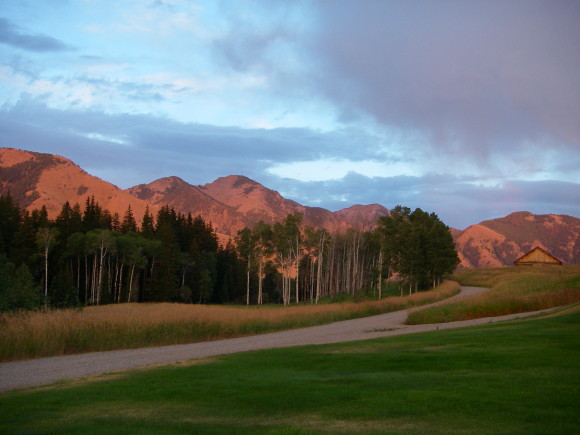
I have this framed at home.
In the end, the Sun Ranch has some claim to a small bit of my soul. Other parts are owned by other places, places with fish for the most part… the Bahamas, Belize, Cuba, the Keys, the rivers and streams of Northern California. I think about Sun Ranch often and the Madison and the Ruby and the Lamar and the memories I have from those times.
I know wolves are not loved by all. They are hated by a great number who have no experience with them at all, like the folks in Siskiyou County who lost what little sanity they possessed when a lone wolf crossed from Oregon into CA a couple years ago. Wolves are also loved by people who don’t understand the places they live and the people who live there and are forced to co-exist with them. Both those extremes seem to drip with a sort of ignorance, and I’m not exactly dry when it comes to all of that myself. Living in the SF Bay Area I don’t confront those issues and don’t live with the consequences. No wolf has taken food off my plate.
Like Bryce, I hope there is a place for wolves in the West. Get the book and read it. It is a quick read and well written and you may just emerge from its pages a little less wet.
The good news is that the dredging has been halted in Bimini. The Privy Council issued an injunction to keep the dredger, named after Machiavelli, from chewing up any more of the Bahamian sand. The bad news… it could start again.
Declaring a major victory for advocacy group Bimini Blue Coalition (BBC), their lawyer Fred Smith, QC, said: “This is a significant step in the effort to save the vital natural resources of Bimini and defend the integrity of the rule of law in The Bahamas. Hopefully, political leaders will come to realize that they do not have the right to bypass the safeguards and protections built into our laws when granting approvals to developers. We are very happy with the court’s decision, and will continue to hold the government’s feet to the fire in an effort to protect the interests of Bimini’s unique community and precious environment.”

Knock it off!